How Reliable Are Computer ‘Reconstructions’ Of Faces From Ancient Times?
AncientPages.com - When we read about the lives of people from the ancient past, we naturally want to know what they looked like.
But how do we find this out?
In recent years, computer-assisted reconstructions of the faces of famous figures from the Greco-Roman world have become popular.
A Roman bust in the Louvre Museum, Paris, widely regarded as a depiction of Aristotle based on an earlier Greek original from the late 4th century BCE. Wikimedia Commons, CC BY
In 2020, for example, a digital artist went viral for using artificial intelligence (AI) technology on the busts of Roman emperors to recreate their faces in a photo-realistic way.
How are facial reconstructions done?
The simplest form of facial reconstruction involves adding realistic-looking skin, eyes and hair to Greek or Roman busts. Other methods can be more complicated.
One of the most famous facial reconstructions of any individual from the Greco-Roman world was the case of Hermione Grammatike. Hermione was a teacher in her 20s who died in Egypt in the early 1st century CE.
Hermione’s ancient portrait and skeleton both survived with her mummy. So, any attempt to reconstruct her face on the basis of the skeletal remains could be compared with the portrait of her.
In 1997, British Museum researchers used CT (computed tomography) scans to create a 3D image of Hermione’s face.
After reconstructing the surface of the face using the skull, the researchers then consulted the coffin portrait to nuance the details.
Image credit: Pixabay
In spite of this rigorous combination of methods, they acknowledged difficulties: Since the skull does not carry enough information to completely determine the facial surface, facial reconstruction from skulls will always contain an element of art. The reconstructed face is likely to resemble that of the living person but is very unlikely to be an exact replica.
So, even with careful techniques, there still remain some doubts about facial reconstruction.
But such reconstructions are becoming more accurate. This is largely thanks to new methods of DNA extraction and analysis, which make it possible to work out the correct colours of people’s hair, skin and eyes.
How reliable were ancient portraits of people?
Basing reconstructions of people’s faces on their surviving busts or portraits is not an entirely safe procedure.
In some cases, there are discrepancies between ancient portraits of people and ancient literary descriptions of what they looked like.
For example, according to ancient texts, the philosopher Aristotle was bald or (alternatively) had short hair and a short beard, as well as small eyes. He wore rings on his fingers and luxurious clothes.
However, ancient busts that have been identified as depicting Aristotle show him with a full beard and plenty of hair.
This raises a new problem: which pieces of information are more reliable – the ancient artwork or the ancient literary description? In cases such as these, it seems almost impossible to decide.
But some ancient portraits must have been fairly accurate depictions of their subjects.
Other authors indicate portraits were not always made solely for accuracy. The Roman writer Claudius Aelianus informs us that "in Thebes a law was in force which instructed artists – both painters and sculptors – to make their portraits flattering. As punishment for those who produced a sculpture or painting less attractive than the original the law threatened a fine of a thousand drachmae."
The wish to see historic faces is universal
In around 39 BCE, the Roman scholar Marcus Terentius Varro published a collection of famous people’s portraits, “not allowing their likenesses to disappear or the lapse of ages to prevail against immortality in men”.
Varro’s collection apparently included 700 portraits of famous historical Greek and Roman people, and each portrait was accompanied by an epigram and brief biography. This collection must have satisfied the wish of the public to know what the faces of famous people looked like.
Clearly, ancient and modern people share this fascination.
We can surely enjoy reconstructions of the faces of people from ancient times. We just need to keep in mind two important issues.
The elaborately wrapped mummy of Hermione Grammatike is held at Girton College, Cambridge. Mark Vuaran/Flickr
Firstly, ancient portraits and busts were themselves not always reliable depictions of people, so reconstructions based on them are of uncertain accuracy.
Secondly, modern researchers acknowledge that reconstructions based on skulls have limitations, though the accuracy of this method is rapidly improving.
So, the next time you see a reconstruction of some ancient person’s face, be cautious before thinking that you are really looking at the exact, almost photographic likeness of someone from the past. You might be – or you might not.
Provided by The Conversation
This article is republished from The Conversation under a Creative Commons license. Read the original article.
More From Ancient Pages
-
 Algonquin People And The Myth Of The Medicine Woman In The Moon
Featured Stories | Feb 1, 2016
Algonquin People And The Myth Of The Medicine Woman In The Moon
Featured Stories | Feb 1, 2016 -
 King Solomon’s Copper Mines In The Timna Valley Did Not Pollute Environment – Geochemical Surveys Reveal
Archaeology | Dec 23, 2024
King Solomon’s Copper Mines In The Timna Valley Did Not Pollute Environment – Geochemical Surveys Reveal
Archaeology | Dec 23, 2024 -
 Unexpected Substance Found In Ancient Maya City May Have Arrived Through Distant Trade
Archaeology | Dec 2, 2024
Unexpected Substance Found In Ancient Maya City May Have Arrived Through Distant Trade
Archaeology | Dec 2, 2024 -
 How Did Climate Change Impact European Ice Age Humans?
Earth Changes | Aug 21, 2024
How Did Climate Change Impact European Ice Age Humans?
Earth Changes | Aug 21, 2024 -
 Native American Tradition Of A Vision Quest – How To Enter The Spiritual World
Ancient History Facts | Apr 25, 2017
Native American Tradition Of A Vision Quest – How To Enter The Spiritual World
Ancient History Facts | Apr 25, 2017 -
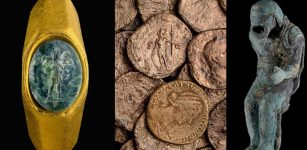 Magnificent Underwater Treasure Recovered From Two Ancient Shipwrecks Off The Coast Of Caesarea
Archaeology | Dec 28, 2021
Magnificent Underwater Treasure Recovered From Two Ancient Shipwrecks Off The Coast Of Caesarea
Archaeology | Dec 28, 2021 -
 Draugr – Vikings Feared This Ugly Living Dead With Prophetic Visions
Featured Stories | May 24, 2020
Draugr – Vikings Feared This Ugly Living Dead With Prophetic Visions
Featured Stories | May 24, 2020 -
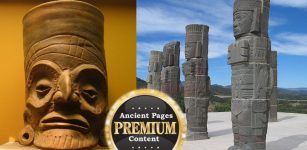 Ancient Manuscript And Controversial Ancient Book Shed New Light On The Mystery Of The Toltecs
Civilizations | Sep 9, 2018
Ancient Manuscript And Controversial Ancient Book Shed New Light On The Mystery Of The Toltecs
Civilizations | Sep 9, 2018 -
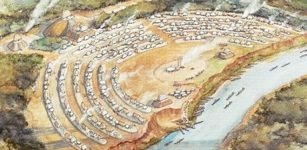 Is The Poverty Point Octagon World’s Largest Ancient Solstice Marker?
Featured Stories | May 21, 2017
Is The Poverty Point Octagon World’s Largest Ancient Solstice Marker?
Featured Stories | May 21, 2017 -
 Story Behind A Huge Mysterious Ancient Rock Art Site In Central Queensland Revealed By Scientists
Archaeology | Sep 21, 2022
Story Behind A Huge Mysterious Ancient Rock Art Site In Central Queensland Revealed By Scientists
Archaeology | Sep 21, 2022 -
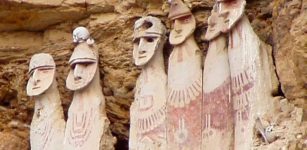 Mysterious Sarcophagi Belonging To The Chachapoyas The Cloud Warriors
Archaeology | Mar 4, 2014
Mysterious Sarcophagi Belonging To The Chachapoyas The Cloud Warriors
Archaeology | Mar 4, 2014 -
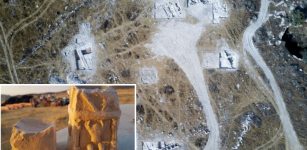 Large Mysterious 2,000-Year-Old Structure Discovered At The Center Of A Military Training Area In Israel
Archaeology | Dec 3, 2017
Large Mysterious 2,000-Year-Old Structure Discovered At The Center Of A Military Training Area In Israel
Archaeology | Dec 3, 2017 -
 Meidum ‘Collapsed’ Pyramid Of Great Builder Pharaoh Snefru
Featured Stories | Jan 2, 2017
Meidum ‘Collapsed’ Pyramid Of Great Builder Pharaoh Snefru
Featured Stories | Jan 2, 2017 -
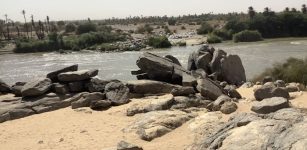 Archaeological Site Along The Nile Reveals The Nubian Civilization That Flourished In Ancient Sudan
Civilizations | Apr 14, 2022
Archaeological Site Along The Nile Reveals The Nubian Civilization That Flourished In Ancient Sudan
Civilizations | Apr 14, 2022 -
 3,000-Year-Old Graves With Some Oldest Burial Sites Discovered in Central Norway
Archaeology | Dec 8, 2017
3,000-Year-Old Graves With Some Oldest Burial Sites Discovered in Central Norway
Archaeology | Dec 8, 2017 -
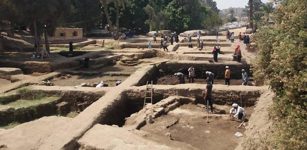 Inscribed Fragments Of Stone Slabs Unearthed In Matariya, Ancient Heliopolis
Archaeology | Nov 9, 2018
Inscribed Fragments Of Stone Slabs Unearthed In Matariya, Ancient Heliopolis
Archaeology | Nov 9, 2018 -
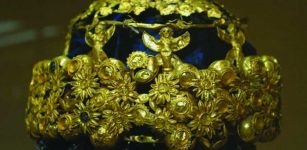 Long-Lost Mesopotamian Queen Hama Discovered By Student Just By Reading Books
Archaeology | Feb 14, 2019
Long-Lost Mesopotamian Queen Hama Discovered By Student Just By Reading Books
Archaeology | Feb 14, 2019 -
 ‘Impossible’ Ancient Egyptian Visit Troubles Historians
Featured Stories | Feb 11, 2021
‘Impossible’ Ancient Egyptian Visit Troubles Historians
Featured Stories | Feb 11, 2021 -
 North America Was Settled By Previously Unknown People – DNA From A 11,500-Year-Old Skeleton Reveals
Archaeology | Jan 3, 2018
North America Was Settled By Previously Unknown People – DNA From A 11,500-Year-Old Skeleton Reveals
Archaeology | Jan 3, 2018 -
 Peculiar Ancient Stone Disk Could Be World’s Oldest Celestial Map
Archaeology | Jan 3, 2024
Peculiar Ancient Stone Disk Could Be World’s Oldest Celestial Map
Archaeology | Jan 3, 2024



